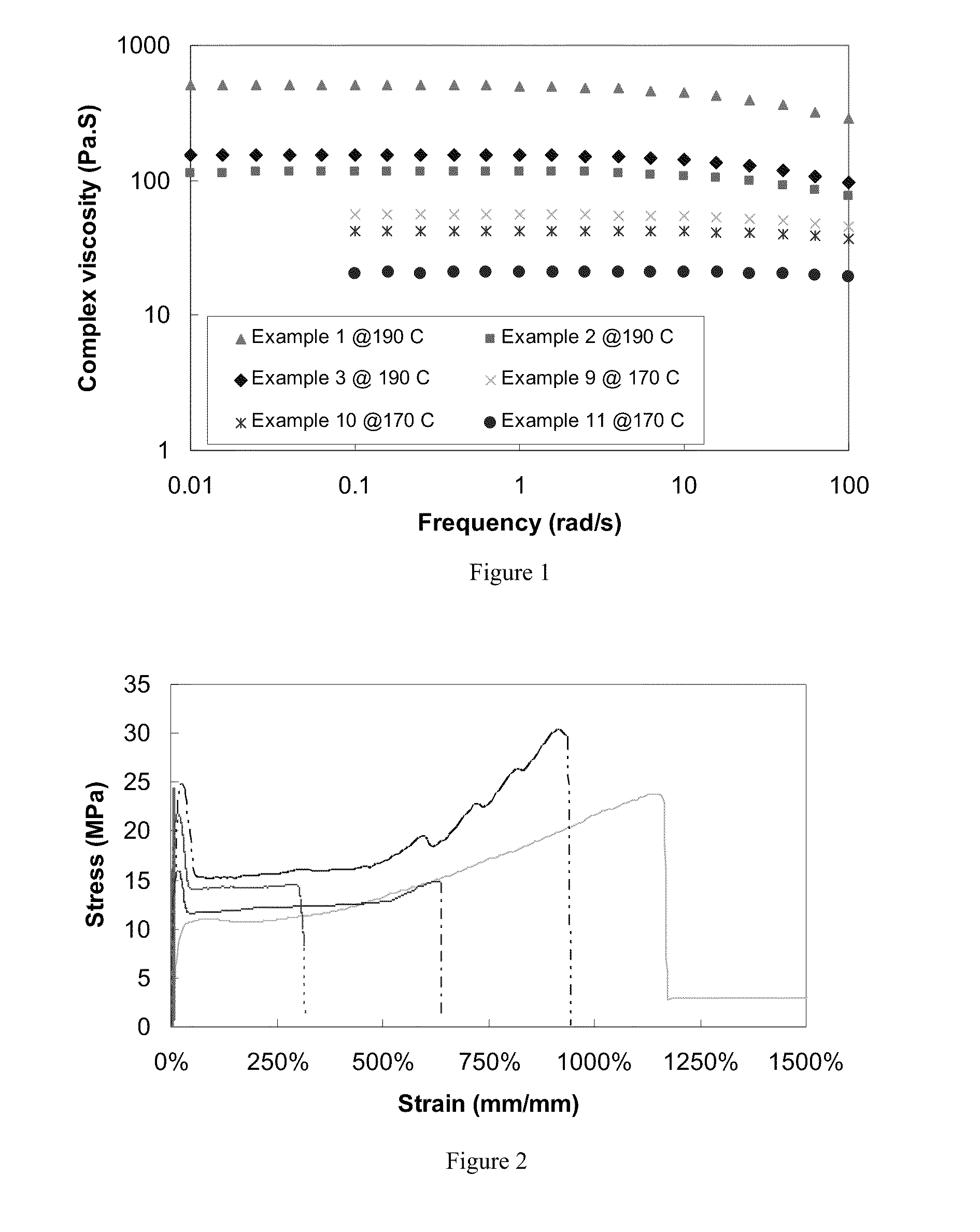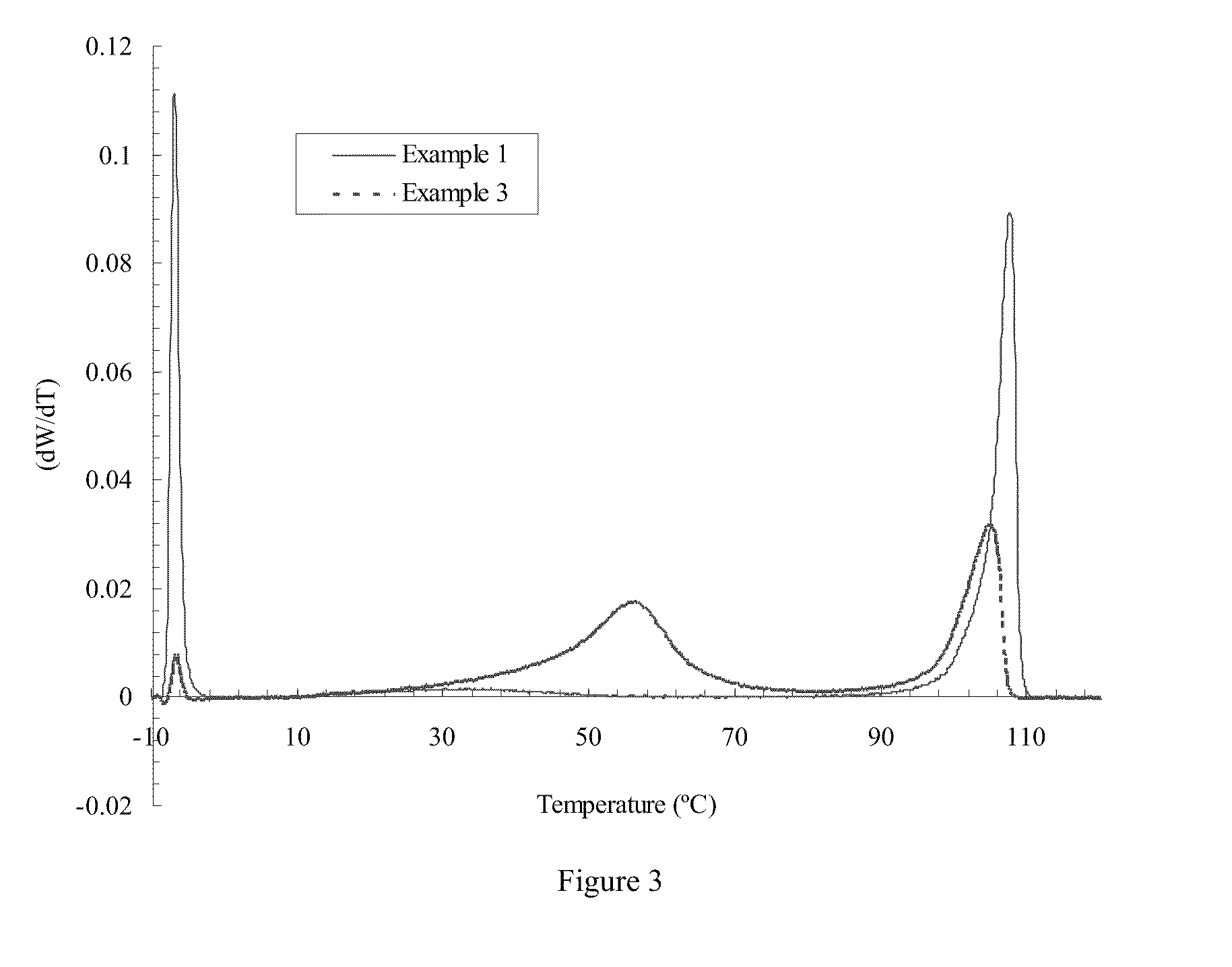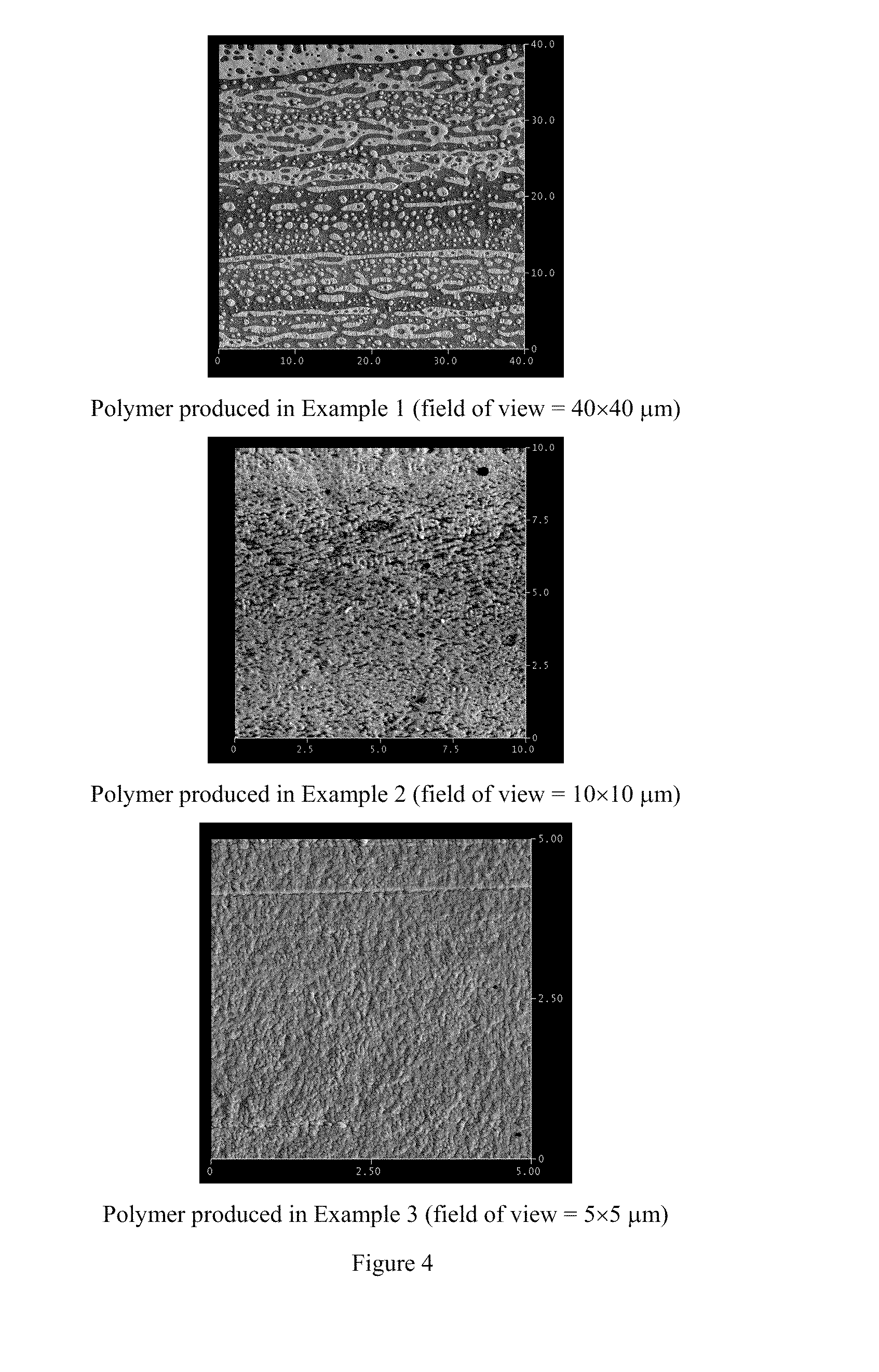Thermoplastic Polyolefin In-Reactor Blends And Molded Articles Therefrom
a technology of thermoplastic polyolefin and in-reactor blend, which is applied in the field of molded articles, can solve the problems of poor surface appearance, low impact strength, and limited approach in terms of the maximum mfr that can be achieved
- Summary
- Abstract
- Description
- Claims
- Application Information
AI Technical Summary
Benefits of technology
Problems solved by technology
Method used
Image
Examples
examples 1 to 3
[0173]These examples demonstrate the use of a series reactors operated in the continuous stirred-tank solution process employing rac-dimethylsilyl bis(2-methyl-4-phenylindenyl) zirconium dimethyl catalyst (Catalyst A) to produce polypropylene in the first reactor and propylene / ethylene copolymer in the second reactor. The first reactor was 0.5-liter and the second reactor was 1-liter; both of them were stainless steel autoclave reactors and were equipped with a stirrer, a water-cooling / steam-heating element with a temperature controller, and a pressure controller. Solvents, monomers such as ethylene and propylene were first purified by passing through a three-column purification system. Purification columns were regenerated periodically whenever there was evidence of lower activity of polymerization.
[0174]The solvent feed to the reactors was measured by a mass-flow meter. A Pulsa feed pump controlled the solvent flow rate and increased the solvent pressure to the reactors. The compr...
examples 4 to 8
[0186]Polymer blends in Example 4-8 were produced by following the same procedure as those used for Examples 1-3, including that the catalyst was catalyst A and the activator was Activator A. The detailed polymerization conditions and some analytical data are listed in Table 2.
TABLE 2Example #45678Polymerization temperature in the 1st reactor (° C.)1001001009090Catalyst A feed rate to the 1st reactor (mole / min)5.7E−085.7E−083.3E−082E−083.3E−08Propylene feed rate to the 1st reactor (g / min)1414141414Isohexane feed rate to 1st reactor (ml / min)8080808080Polymerization temperature in 2nd reactor (° C.)8080808080Ethylene feed rate to 2nd reactor (SLPM)210.50.52Conversion (%)91.498.492.592.796.9Tc (° C.)105.4108.6106.899.0103.6Tm (° C.)154.8154.5154.4155.0156.4Heat effusion (J / g) of primary peak36.963.368.383.636.0Tg (° C.)−30.5−16.2−31.8Tm from a secondary melting peak (° C.)110.6Ethylene content (wt %)9.336.544.94.2710.26Zero shear viscosity at 170° C. (Pa · s)125170142732373Mn_LS (kg / mo...
examples 9 to 12
[0196]In Examples 9, 10 and 11, low crystalline propylene / ethylene copolymer was produced in a first reactor, and higher crystalline propylene / ethylene copolymer was produced in a second reactor. The polymerization catalyst, activator and procedure were the same as that used in Examples 1-3 except that ethylene was fed into the first reactor and additional propylene was fed into the second reactor. The crystallinity of the polymer produced in the second reactor was controlled through adjustment of ethylene conversion in the first reactor and addition of propylene into the second reactor. In Example 11, 1,9-decadiene was also added into the first reactor. Presence of 1,9-decadiene makes branched propylene / ethylene copolymers and enhances the vinyl chain population of the polymers produced in the first reactor and branched block product population in the subsequent polymerization in the second reactor. Example 12 was produced following the same procedure as those used for Examples 1-3...
PUM
| Property | Measurement | Unit |
|---|---|---|
| Temperature | aaaaa | aaaaa |
| Temperature | aaaaa | aaaaa |
| Temperature | aaaaa | aaaaa |
Abstract
Description
Claims
Application Information
 Login to View More
Login to View More - R&D
- Intellectual Property
- Life Sciences
- Materials
- Tech Scout
- Unparalleled Data Quality
- Higher Quality Content
- 60% Fewer Hallucinations
Browse by: Latest US Patents, China's latest patents, Technical Efficacy Thesaurus, Application Domain, Technology Topic, Popular Technical Reports.
© 2025 PatSnap. All rights reserved.Legal|Privacy policy|Modern Slavery Act Transparency Statement|Sitemap|About US| Contact US: help@patsnap.com



